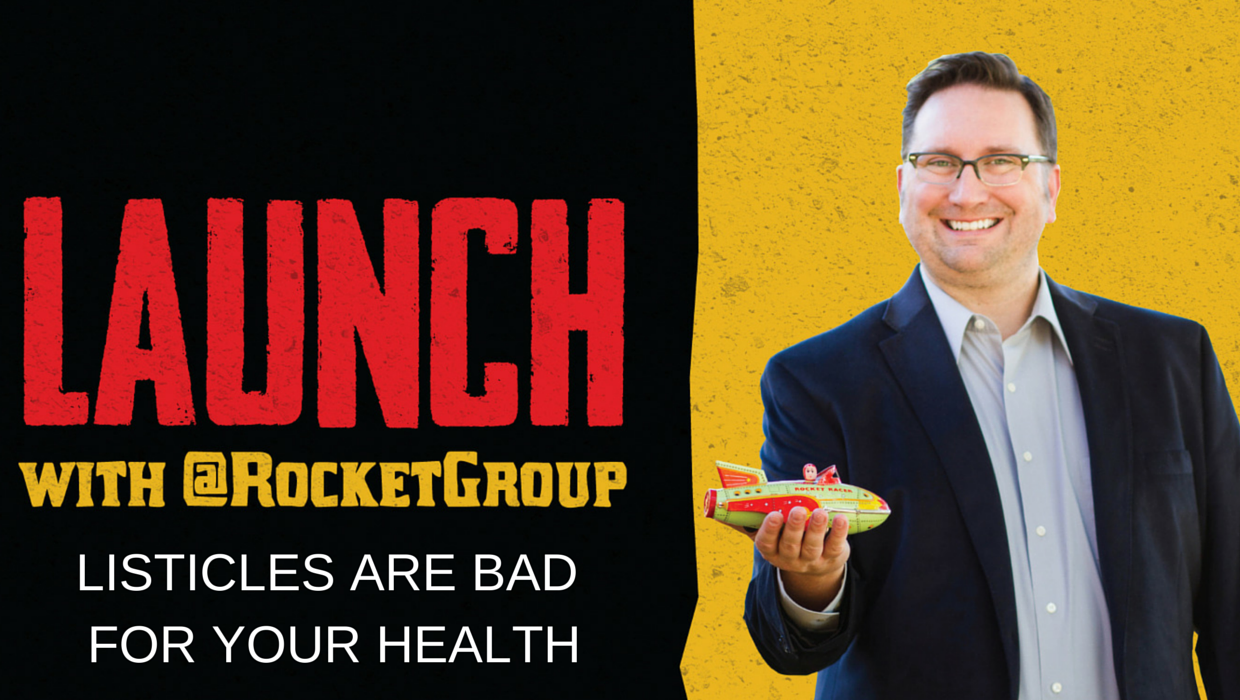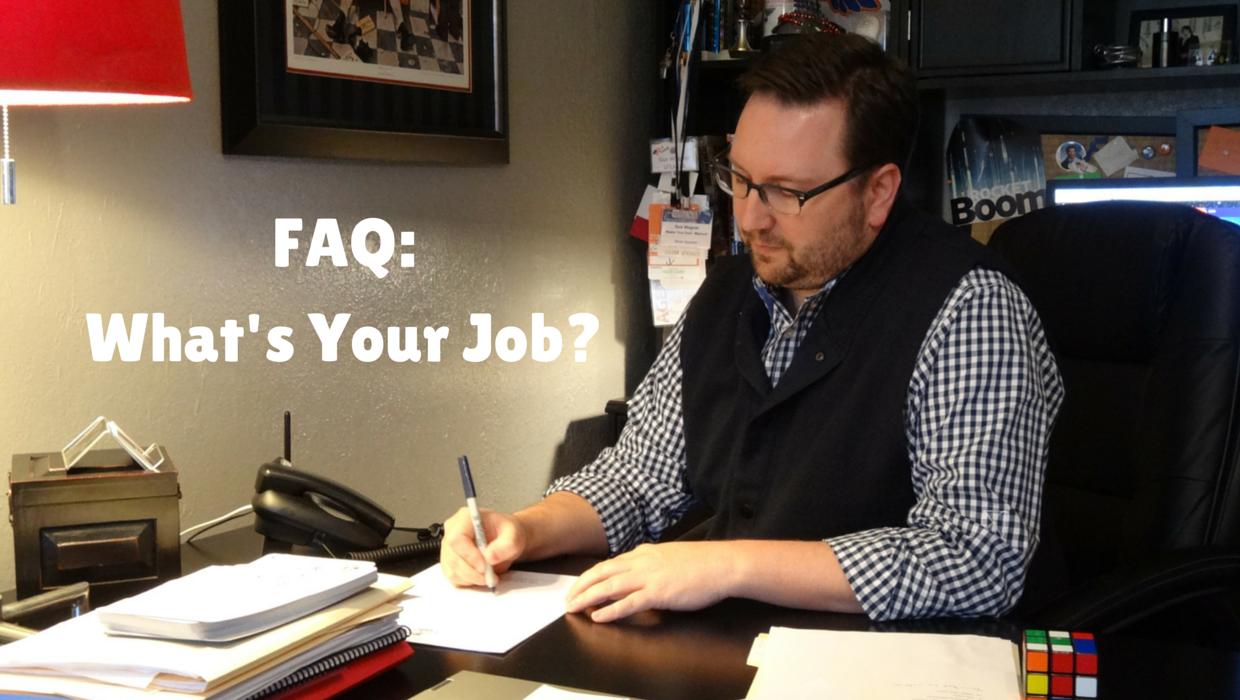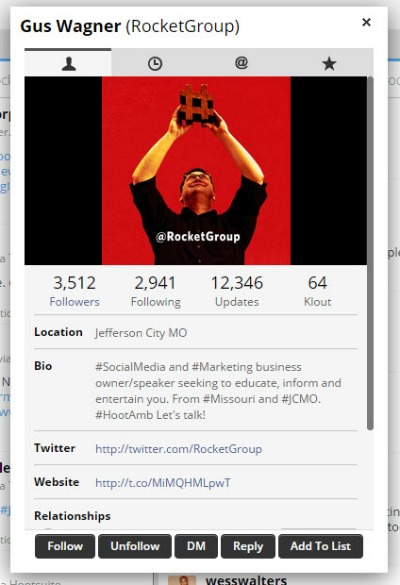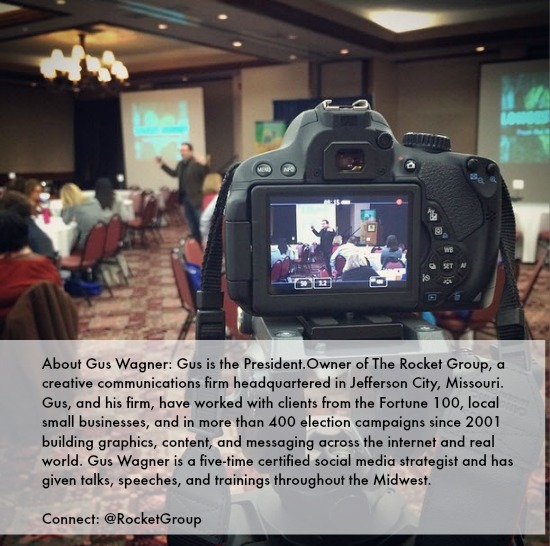Welcome to ASTRONETTURFROOTS!
The world of converting your fans into an empowered, committed, and educated army of advocates for your organization’s or campaign’s goals.
- Increases audience involvement
- Increases member and supporter commitments
- Increases local, regional, and national influence – political or otherwise
- Increases reach – spreading your message beyond your traditional silos
- Increases legislative, decision maker, purchase, and advocacy action by your members, customers, and supporters
- Increases your ability to monitor your loyal opposition and build bridges to them when needed
- Extends your voice – no matter the size or geographic location – across the internet and the real world for a fraction of the cost

We Did A Study on Facebook Video So You Didn’t Have To
Gus WagnerVideo is where content is at these days and Facebook continues to be where the people are in social media. We recently ran a one-week experiment on Facebook video. Here are those results.Methods We Used for Facebook Video
Admittedly, the “Question of the Day” format we used in this test was inspired by Gary Vaynerchuk, and his decision to dump his Question of the Day. It was a good choice to create some interest in what was being said behind the auto-play functionality of Facebook.
All of the videos were filmed on my Galaxy S6 Edge instead of our higher dollar camera equipment. This was done to reinforce our encouragement that anyone can create video content. Also, we were testing results of posting from the mobile device against posting from the desktop.
Also, true to my “one-take-Jake” tradition, we didn’t edit any of these videos. I also aimed to keep them at a minute or less (only broke that barrier once!), not repeat filming locations, and bring value through the questions and the backstories. We also tested organic reach versus paid reach and found some interesting information.
Technical Results of the Facebook Video Study
In a high-level view, the results look outstanding. 44{1ccf3f7051f621f207bf0b5abe66fecd9fcbebd6ccca57cd81eaf6422f6a0a70} of people who saw our videos in their
newsfeeds and the organic reach of the video posts was outstanding compared to our, and probably your, “normal” Facebook posts.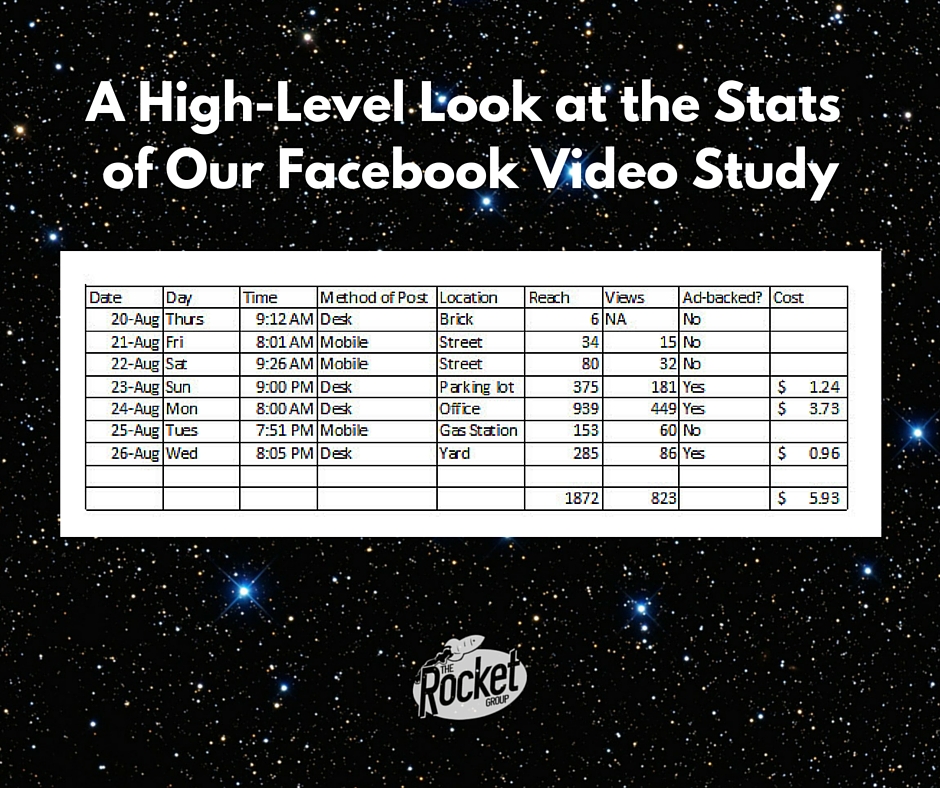
The two items here that jump out are the escalating reach, even in the non-paid posts, and the fact that the paid posts only cost $5.93 for hundreds of views.
As you may know, Facebook counts a view as when one individual has viewed more than 3 seconds of the video. When we look at the viewing time of each of the seven videos in the study, we see that the average viewing time was 12.85 seconds or 29{1ccf3f7051f621f207bf0b5abe66fecd9fcbebd6ccca57cd81eaf6422f6a0a70} of the average video.
Deep Look Results of the Facebook Video Study
In your Facebook Insights, you can click each individual post and see a ton of information on fan interaction, or inaction. By looking at each of these posts, we learned that while the organic reach was great and the views were more than expected, our most desired fan action – link clicks – wasn’t that great. Several of the posts didn’t include links at all and those that did were to evergreen content here on the TRG site.
(Aside – While the clicks weren’t that great we did pick up new fans, and most importantly, a new prospect to do business with.)
We also see, as is the norm for videos like these, that very few viewers made it all the way to the end of their viewing. A 29{1ccf3f7051f621f207bf0b5abe66fecd9fcbebd6ccca57cd81eaf6422f6a0a70} view length isn’t great and tells us that these types of raw one-take videos shouldn’t be a featured form of content, but a complimentary form of content.
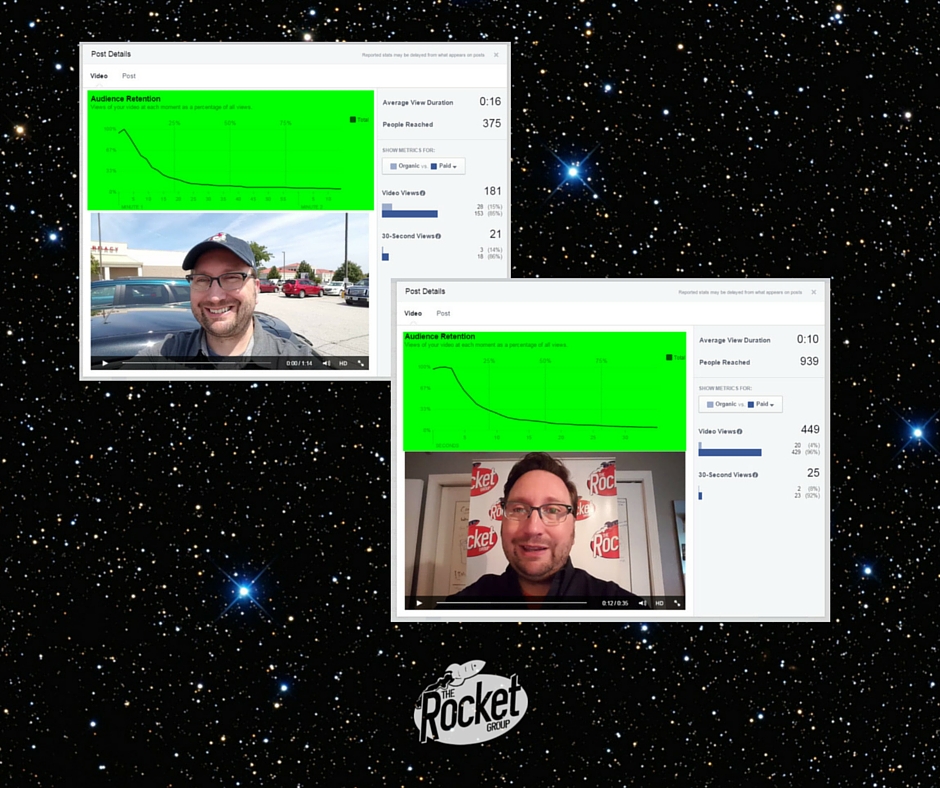
Conclusions of the Facebook Video Study
First, posting seven videos in seven days is not nearly enough of a sample to arrive at scientific confirmations. To use a popular term in baseball, it’s a small sample size. Knowing our fan base the way we do and Facebook the way we do, it’s a good start and enough to have some takeaways to share with you:
- Get your point across in the first few seconds of the video. If the viewers are going to fall off after the first third of your content, then you have to hook them early. This is something we practice in our full-on edited videos and is a mental cue we will have to remember in these mobile phone videos.
- The organic reach, at this moment of typing and posting, blows every other type of Facebook post out of the water. We’ll always advise caution to keep a mix of content – optimized photos, videos, graphics, text, etc. – posting from your page but you should really be trying organic uploads of video if you aren’t already.
- Facebook ads for video views are, again at this moment of typing and posting, extremely affordable. See the spreadsheet above and realize we spent less than $6.00 for more than 700 highly targeted views. Good luck doing that with your newspaper ads.
- When filming a video with your mobile device, you have the power to shake up the backgrounds, looks, even the subjects in the videos. That video camera in your pocket right now is probably the most powerful video camera you own. Put it to work for your business, organization, or nonprofit and get great social media content too!
- While you should be creating a video to post to Facebook, you shouldn’t forget YouTube. That being said, the people who see your Facebook videos are people who have already connected with you. For most of us, the people who find us on YouTube are ones that are searching and finding you or that you have blasted links out to through other social media channels. It’s the old reactive versus proactive model all over again.
- The world, at least its online audiences, are quickly moving to a video-consumption-first world. That’s why Facebook is battling YouTube as hard as they are right now. You’ve got to be prepared. You already have the tools. Now you just need to take the time to put them to work for you.
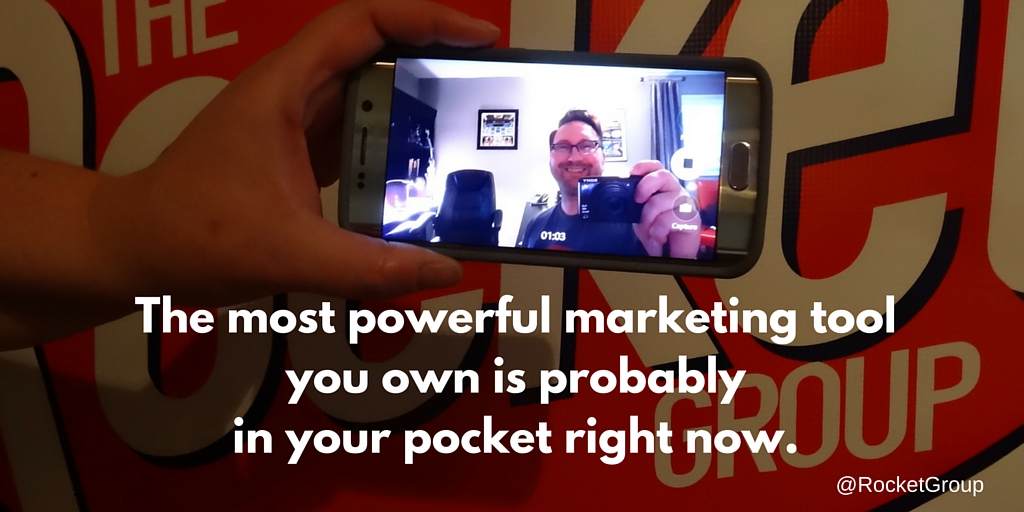 Run your own study with your own videos, your own audience, and your own personality. We’d love to hear your results in the comments below or even on Facebook!
Run your own study with your own videos, your own audience, and your own personality. We’d love to hear your results in the comments below or even on Facebook!The Facebook videos in the QotD experiment are embedded below if you are interested. If there is anything we can do to answer your questions, help you overcome a marketing
struggle, or listen to your complaints, feel free to reach out at any time!Thanks for the time, for watching the videos, and for checking our math above!
Using Your Personal Facebook Profile for Business
Gus WagnerWe’ve started a new thing, for us anyway, on our personal Facebook page called the #SaturdayShoutout. It’s just a small way to give props to the people, businesses, organizations, nonprofits, and Corgis in my life who I’d like to show a little gratitude to. Feel free to join in and do your own on a Saturday morning.I recently took it a step further and madea Aaron Sorkin walk-and-talk video. (See it here.) In it, I discuss the reasons why you shouldn’t use your personal Facebook profile for your business purposes. Spoiler alert: the biggest reason is you are ticking off your personal friends and they are unfollowing you. This leaves you with an empty room.I’d really like to hear your thoughts. Does an endless stream of business stuff from your personal friends lead you to unfriend/unfollow? Does a random mention of their work seem more acceptable? Are you actually finding success in breaking the Facebook Terms of Service by posting all of your business stuff on a personal page? Share your thoughts in the comments below or contact me anytime!Here are some additional links you may find helpful on your personal and/or professional Facebook journey:Talk soon,When Should I Be Posting to My Social Media and Web Platforms?
Gus WagnerThe short answer is always, “When your fans are online” and the longer answer is contained in the video above. Let’s discuss best strategies for posting content to social media and the web.You may also be interested in these posts:Quick! Look at your #Facebook Insights’s “When Your Fans Are Online” tab. Does it look like a whale? Now that you have done this, be sure to post when YOUR fans are online not when YOU are online! #TRGRules
Posted by The Rocket Group on Wednesday, January 14, 2015
HAM is Simple Way to Convince Your Audience to Take Action
Gus WagnerGus Wagner speaking at the Simonsen Business Academy in Jefferson City, Missouri
What if we told you that the two simple things you needed to do to persuade your audience to make the decision you want them to make both amounts to something as simple as HAM? Yes, HAM.
What we’ve learned at The Rocket Group is that HAM is what persuasion is all about.
How do you make people buy a product, advocate for a
cause, or vote for a candidate? Whether you hope that a consumer will buy something or become a fan ofsomething, or whether you hope a constituent will vote for something, the same two things have to happen: you need to capture that person’s heart and their mind. You need to win their ham.Whether it’s an idea, an issue, a person, a
product, or anything else you’re trying to convince someone about, you need to win their hearts and their minds. Win the heart and you’ve won the emotional appeal; win the head and you’ve won the logical appeal. Win them both, and you’ve got their vote, theirtransaction, or their donation.If you can convince somebody’s HAM, you’ll have them in your wheelhouse to make the purchase that you want them to make, make the decision that you want them to
make, or to vote for the candidate you want them to vote for.Need help finding the hearts and minds of your current, potential, and future audiences? Drop a line anytime!
Do You Have the Resources for Social Media Success?
Gus WagnerIt takes more than signing up for accounts and throwing money at ads to succeed at social media. Can you, and your company, organization, or non-profit, commit to telling the stories about your efforts?How Not to Suck on Twitter
Gus WagnerI have one simple trick to share with you today that will help keep you (or your business, organization, or non-profit) from sucking at Twitter. My trick isn’t complicated or time-consuming, and it doesn’t require a “social media expert” to execute.
My simple trick for how not to suck at Twitter? Complete your profile. TWEET THIS
When you create a new Twitter profile, Twitter uses a default avatar as your personal profile picture. That default picture is of an un-hatched egg. If you’re using the un-hatched Twitter egg as your profile picture, you’re sucking at Twitter.
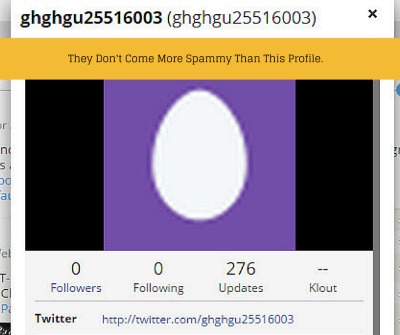
Here’s why:
The un-hatched egg tells everyone else on Twitter that you’re either a newbie or a spammer. If they think you’re a newbie, you won’t have much credibility with more established Twitter accounts. If they think you’re a spammer, you could have bigger problems.
If other users report your account as spam, you’ll face some difficulties down the road. Even if your account is completely legitimate, spam reports can hurt you down the line, and that un-hatched egg profile picture will earn you a lot less followers than you’d get with a personalized image.
It takes 5 seconds to upload a friendly, smiling picture of yourself to Twitter or to upload your corporate logo. Anything is better than the un-hatched egg, so don’t suck: upload a better profile picture.
Now that your smiling face or your logo or some other image that represents you (or your company) is on Twitter as your avatar, you need to finish filling out your profile. Let’s use my Twitter bio as an example:
My bio is filled out completely. My name, description, and location are all there. For bonus points, I’ve hashtagged the key words that might help people find me. Those hashtags are #SocialMedia, #Marketing, #Missouri, #JCMO, and #HootAmb.
My geographic location makes me searchable when other people look for influencers in Jefferson City, Missouri. My web address helps people learn more about what we do at The Rocket Group, and then, of course, you can see how long I’ve been on Twitter (I joined in May 2009).
We HQ in the heart of #Missouri which is in the heart of #America: #JCMO Where are you from? pic.twitter.com/CA9iXytrFb
— Gus Wagner (@RocketGroup) January 15, 2015
It only took a few minutes for me to create my entire Twitter bio, including uploading my profile picture, and I didn’t need to be an expert to do it. Twitter doesn’t have to be hard — filling out your profile is an easy way to not suck at it.
To learn more about how to rock at Twitter, check out these posts:
How to Properly Format Your Tweets
Why Did I Favorite Your Tweet?
Do you have thoughts on how else not to suck on Twitter? Leave a comment!
Why You Should Choose Hootsuite Pro
Gus WagnerAt a recent presentation on social media best practices with ACT Missouri, I discussed a frequently asked question regarding Hootsuite as a management tool for social conversations. The video of that conversation is embedded below.
First, a couple of points:
- Full disclosure: As disclosed in my Twitter bio, I am a Hootsuite Ambassador (#HootAmb) but receive no monetary compensation for my endorsement of the program. As mentioned right off the bat in the video, I occasionally do get some goodies.
- I would be overwhelmed by the noise of social media without Hootsuite there to guide the communications and listening for our clients channels and our own. It’s an incredibly powerful and affordable tool.
- Finally, this speech was given during the 2014 National League Championship Series featuring the St. Louis Cardinals. I was highly optimistic at this time. Maybe next year!
Check the programs out for yourself:
Hootsuite Hootsuite PRO A Comparison of the Two, well, Three Plans
Thanks to ACT for having me to work with your staff and for the good work you are doing. If you are interested in training sessions of your own – in real life, in a class or online – feel free to contact me anytime!
On to the video!
Thanks for the time,2 Steps to Success with Political Direct Mail
Gus WagnerIt’s election time again – just like it is all the time these days – and mailboxes are filling up with mailers. These two tips on dimensions and scorched earth policies will help you be successful come election day.




